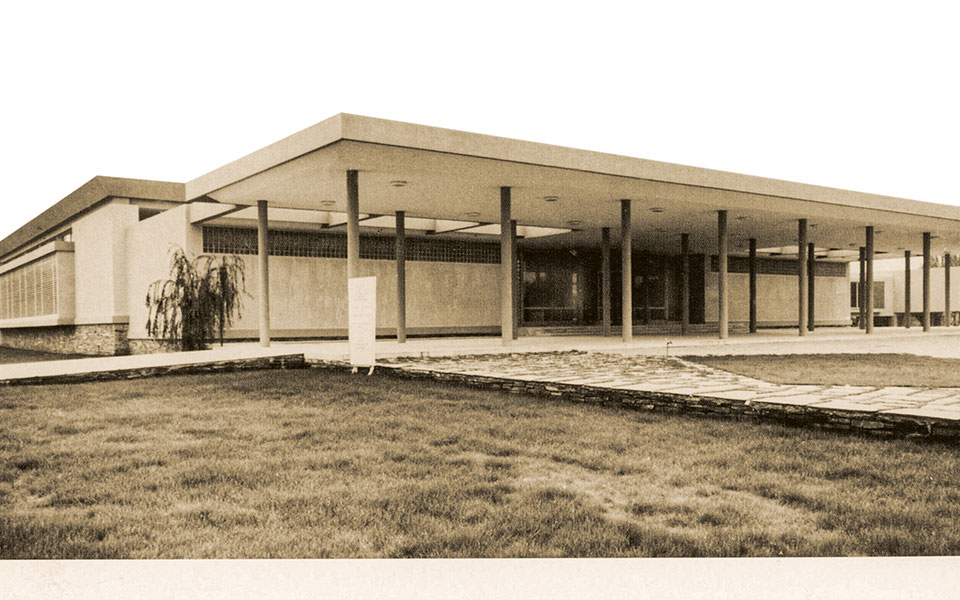Following their latest exhibition achievements, three words immediately come to mind that might best describe the Archaeological Museum of Thessaloniki (AMTh): creativity, responsiveness and outreach. This remarkable museum is a city jewel, one that might be mistaken for a recent addition to the city’s cultural scene, thanks to its modern approach, but which actually has been a precious local institution for more than a century. The museum’s new temporary exhibition, “60 Years, 60 Moments” (October 27, 2022 – October 31, 2023), celebrates that long history.
A rich history within a rich history
Although 2022 marks the completion of six decades since the AMTh opened its current doors – the official ribbon-cutting for the museum building took place on 27 October, 1962 – the Museum’s colorful story actually began much earlier. In many ways, the AMTh’s history is a reflection of the eventful, even tumultuous history of its millennia-old, long-enduring host city. Until the early 1920s, across an area of the Greek mainland rich in archaeological remains from earliest prehistoric times through the reigns of Macedonian kings and the hegemonies of the Romans, Byzantines and Ottomans, antiquities destined for the AMTh were gathered and stored in various locations, including the Dioikitirion (the present-day Ministry of Macedonia-Thrace); the Ottoman Idadie School (now part of the University of Thessaloniki); the French Army barracks at seaside Mikro Emvolo; the Rotunda; and the White Tower.
In the years following the 1922 Smyrna evacuation, when Thessaloniki was inundated with refugees, the AMTh’s formative collections found a singular refuge within the Yeni Mosque, now repurposed as a museum. There, an extensive array of these objects were on display to the public from 1925 until the new archaeological museum opened in 1962.
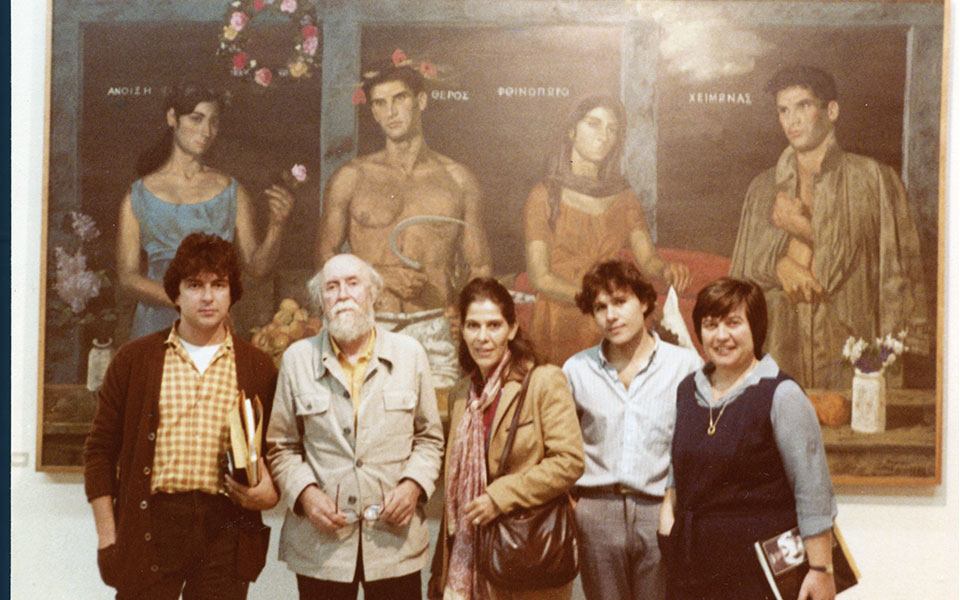
© Katerina Romiopoulou Archive
60 Years, 60 Moments
In two large galleries, the “60 Years, 60 Moments” exhibition provides AMTh visitors a probing, comprehensive look into both northern Greece’s impressive cultural heritage and the development of its leading museum, through sixty individual display stations laid out in in chronological order. Simple and complex, alternately archaeological, historical, scientific, artistic and technological in theme, these individual windows into the past offer a look at the fascinating array of artifacts, events, bequests, historical milestones, artistic works and digital advances that have made the AMTh the cultural dynamo it is today.
In the beginning…
The display station focusing on the year 1962 makes it clear, right from the start, that the AMTh’s museological approach has always been about richly blending the past and present. The new building itself, with its central courtyard and colonnaded porch, designed by architect Patroklos Karantinos and constructed in 1961-62, represents a harmonious combination of Classical Greek architecture and modernism. The inaugural presentations likewise pointed to a core importance placed on archaeological sites and artifacts, artistic expression, both ancient and contemporary, and the repatriation of Greek cultural heritage.
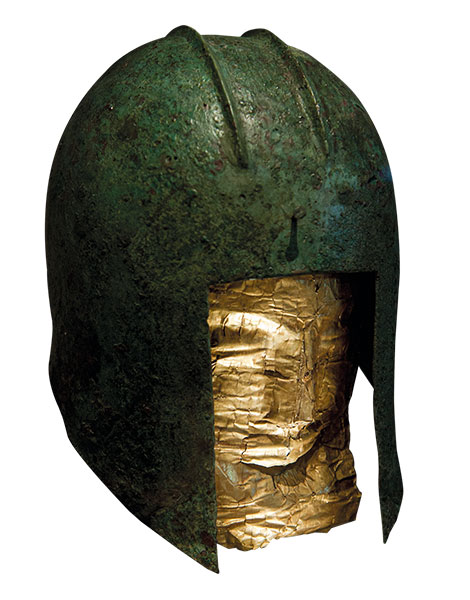
© Courtesy of the Archaeological Museum of Thessaloniki
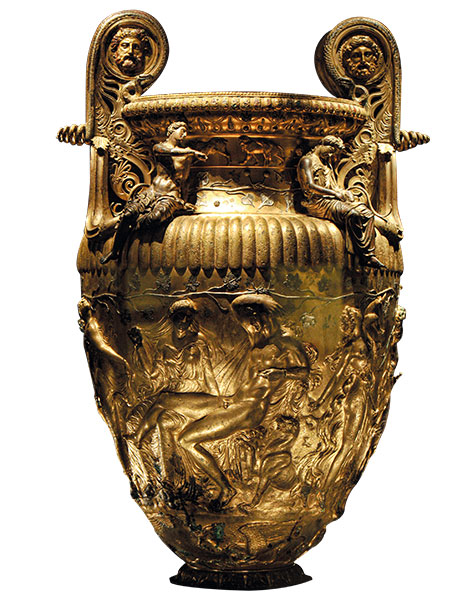
© Courtesy of the Archaeological Museum of Thessaloniki
Landmark exhibitions
A particular strength of the AMTh has long been its timely and visually striking exhibitions. In 1962, the Olympian gods must have been smiling down on AMTh planners, as the discovery earlier that year of seven luxurious tombs at Derveni, the necropolis of ancient Lete northeast of Thessaloniki, allowed the Museum to present to an enthusiastic public the now-famous site’s extraordinary riches – including a unique bronze masterpiece, the Derveni Krater – as part of its introductory exhibitions.
Other exhibitions soon followed, including the Museum’s first presentation on prehistoric Macedonia and Thrace (1965), featuring objects dating from the Neolithic to the Early Iron Age, and its extensive display of ancient glass and ceramic vases (1965-66), dating from about 700 BC through the Byzantine era. In June of 1978, when a devastating earthquake had struck Thessaloniki, a dedicated staff working from tents pitched on the museum grounds toiled on, and the exhibition “Treasures of Ancient Macedonia,” presenting amazing examples of ancient metalworking, opened just seven weeks later.
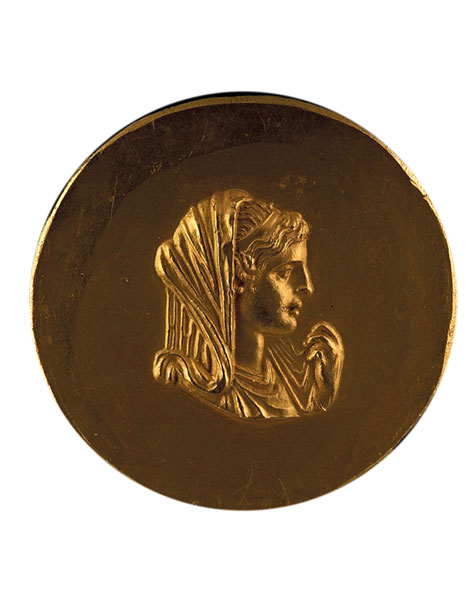
© Courtesy of the Archaeological Museum of Thessaloniki Archives, Visualhellas.gr
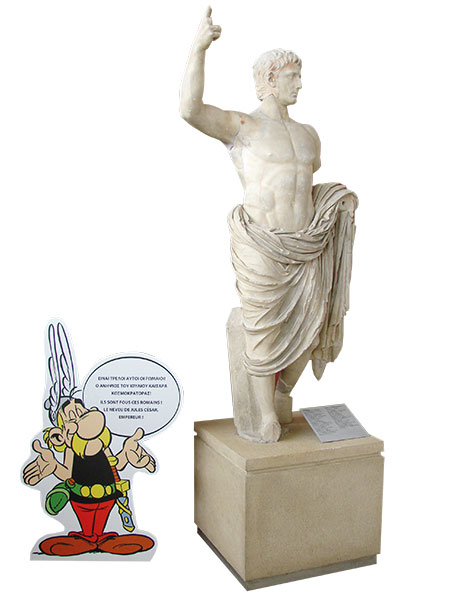
© Courtesy of the Archaeological Museum of Thessaloniki
The AMTh’s far-reaching collaborative capabilities have been demonstrated through numerous in-house or traveling shows, including “Alexander the Great, History and Legend in Art” (1980), for which artifacts were sent to Thessaloniki from European and American partner institutions. Afterwards, this impressive collection, featuring the Derveni Krater and the golden burial larnax and oak-leaf crown of Philip II, was sent out as “The Search for Alexander” (1980-1983) to seven major US cities. Following their return, the royal treasures from Vergina were installed in a new wing at the AMTh (1984). Later, ancient Macedonia and the kingdom of Alexander the Great were the focus of a Paris exhibition (2011) in conjunction with the Louvre. Another internationally successful exhibition, “Macedonia from Mycenaean Times to Alexander the Great” (1988), visited Australia, Montreal, Hanover, Copenhagen, Marseilles, Rome, Buenos Aires and Florida.
At home, the AMTh has played an active role in Thessaloniki’s various civic cultural festivities, contributing special archaeological and art exhibitions to the city’s 2,300-year birthday celebration in 1985, as well as organizing or assisting with presentations and educational programs in 1997 when Thessaloniki was named the European Cultural Capital. In 2018, during the European Cultural Heritage Year, the AMTh assembled more than a hundred artifacts for “Copying (in) the Past: Imitation and Inspiration Stories,” which showcased 5,000 years of Greek art and the fundamental impact of ancient Greece on European art and culture.
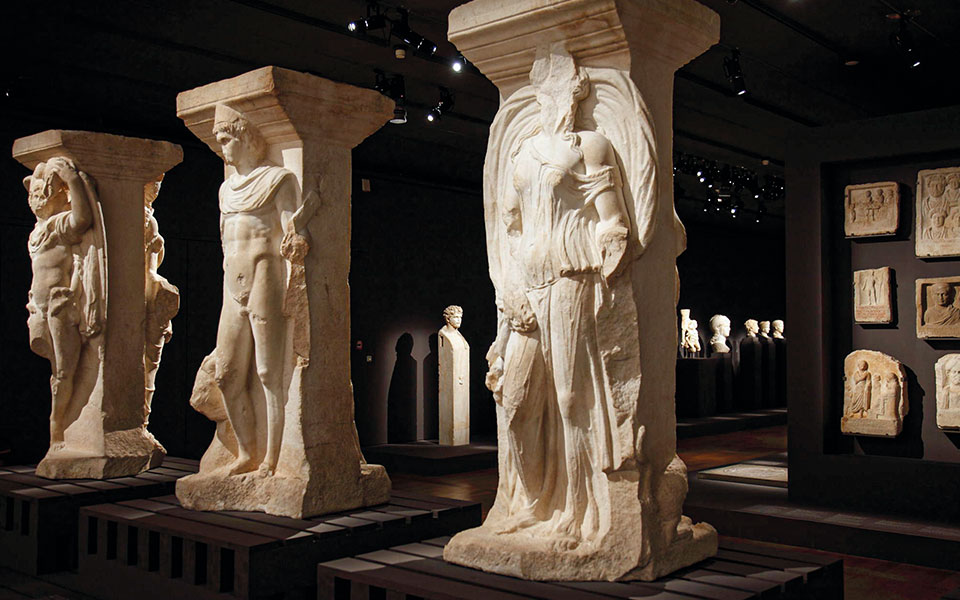
© Courtesy of the Archaeological Museum of Thessaloniki
Great art and artists
Often overlooked is the degree to which the AMTh has served as both an archaeological museum and an art gallery. Since the beginning, great artists past and present have been given the spotlight. Inaugural art shows commemorated nineteenth-century painter Nikolaos Gyzis and the more “modern trends” of nineteen other Greek artists, while a 1981retrospective, attended by 30,000 visitors, focused on Yannis Tsarouchis. In the last fifteen years alone, 80 art exhibitions involving 364 artists from 45 countries have been hosted at the AMTh.
Humor, and an appreciation for popular art is reflected in the museum’s 2010 traveling exhibition “50 Years of Asterix; the Gallic Hero in the AMTh.” Today, such a combination of historical perspective and artistic playfulness continues to shine through in the current show, where the Cabinet of Curiosities at Station 57 (note that the “5” is mounted upside-down!) displays unknown or oddly intriguing objects from the AMTh’s storerooms, bringing to mind the early development of modern museums from the eccentric private collections of individuals. A subsequent display of the names and actual signatures of the museum’s directors, along with two delightful art installations, one of stacked-up AMTh publications and one of rows of personal coffee mugs belonging to staff members, remind us of the hardworking people behind the scenes who make it all happen.
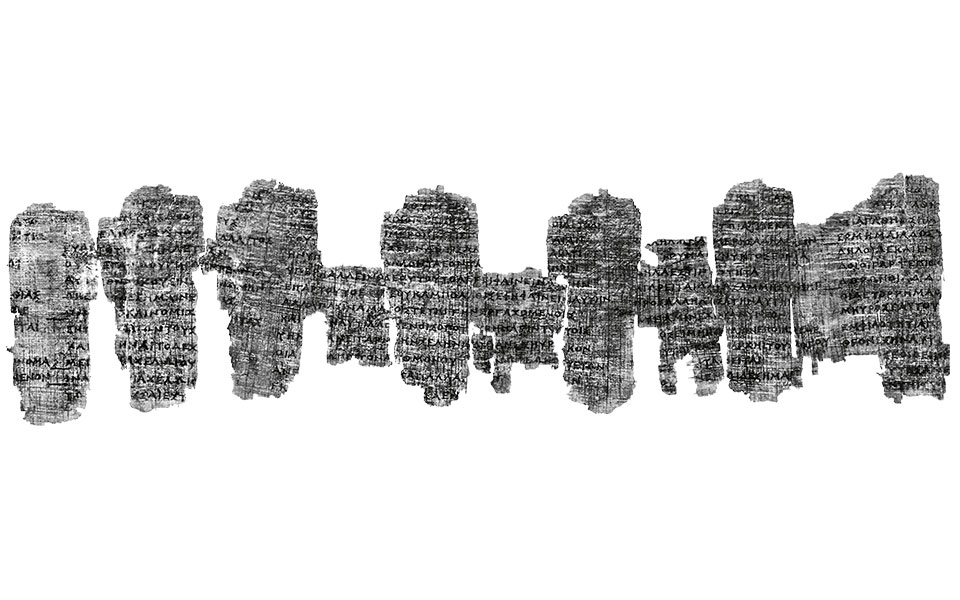
© Courtesy of the Archaeological Museum of Thessaloniki Archives, photo: Orestis Kourakis
Remarkable finds and sites
Along with Derveni and the Archaic and Classical-era necropolis of Sindos, the latter a subject of a temporary exhibition, the 60 Years exhibition highlights other iconic archaeological sites and significant finds previously celebrated at the AMTh. These include ancient Akanthos in Chalkidiki, first excavated and presented in 1973; the inscribed Roman road marker that explains the naming of the Via Egnatia highway, found in 1974; and the mid-4th c. BC tomb of an affluent, high-ranking Macedonian officer at Katerini, uncovered in 1977. The thrilling discovery of Philip II’s magnificent royal tomb at Vergina also came in 1977, while the Odeion in Thessaloniki’s Ancient Agora began hosting public events again in 1997.
Buried secrets
Little-known historical facts about the AMTh are also revealed, such as the covert crating-up and burial of museum antiquities in protective trenches at the Yeni Mosque in 1940. It wasn’t until 1947-51 that the Museum’s buried artifacts were re-excavated, while certain gold and silver items hidden in the vaults of the National Bank of Greece in Athens weren’t returned until 1967. Later, in the final decades of the millennium, as construction work proceeded on HELEXPO’s International Exhibition Centres and other modern buildings, the archaeological wealth of the AMTh’s immediate neighborhood was brought to light, including a Neolithic settlement and thousands of graves dating from the Hellenistic period through to the Early Christian era.
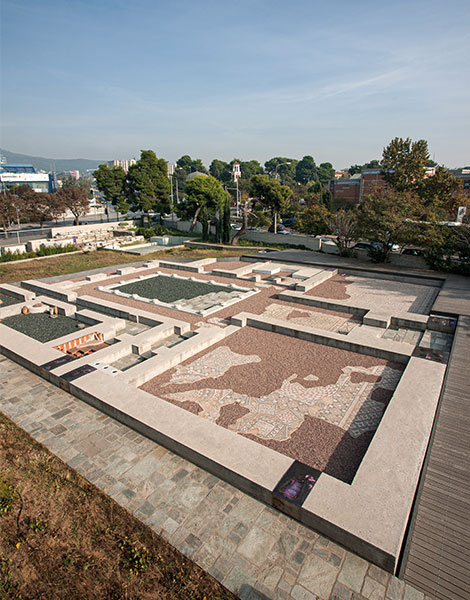
© Alexandros Avramidis
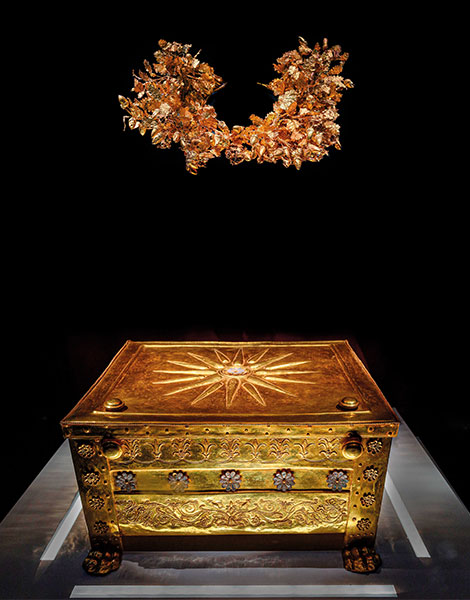
© Courtesy of the Archaeological Museum of Thessaloniki Archives, Visualhellas.gr
With a little help from our friends
Over the years, as the current exhibition reveals, the AMTh has greatly benefitted from public voluntary assistance and the generosity of key donors. The Friends of the Museum service group was founded in 1985, although valuable material contributions were already coming in, such as the 2,700-coin private collection of Georgios Papailiakis (1976), and the Stamatios Tsakos Collection of Neolithic figurines and other valuable artifacts (2000).
Nostos: heroic homecomings
1968 was a particularly good year for the recovery of items and the enrichment of the museum’s collection. Minoan, Mycenaean and Cycladic artifacts were seized from the black-market dealer Stefan Martin Gericke when he attempted to cross the Greek/Yugoslav border. In 2007, a golden myrtle-wreath crown from ancient Macedonia was returned by the J. Paul Getty Museum.

© Katerina Romiopoulou Archive
Innovative approaches
Innovation is a hallmark of the AMTh, with imaginative children’s education programs; experimental pottery-making workshops; use of archaeometric, non-invasive, physico-chemical analyses in its conservation laboratories; and the introduction in 2007 of a more modern, dynamic and anthropocentric approach to exhibitions, often in dialogue with other Greek and foreign cultural institutions. In 2019, the museum began hosting its own book club; during the COVID lockdown, this initiative, along with a specially devised program of internet-based activities, kept the AMTh’s virtual visitors in active contact with the institution.
Expansion, modernization and renewal
The 60 Years | 60 Moments exhibition does a particularly good job of documenting the remarkable evolution of the AMTh. Among the changes that are the modernization of its approach to the recording, classification, lab analysis, and conservation of its collections in 1973; and the complete renovation of its organization, museological approach and infrastructure that took place between 2001 and 2006. Research, publication, innovation and cultural entrepreneurship all came together to better elucidate the realities of ancient daily life and to link that world with our present-day existence. In expanding its displays, new open-air exhibits were also created outside, in the Museum’s colonnaded porch (1983) and surrounding gardens (2009, 2014).
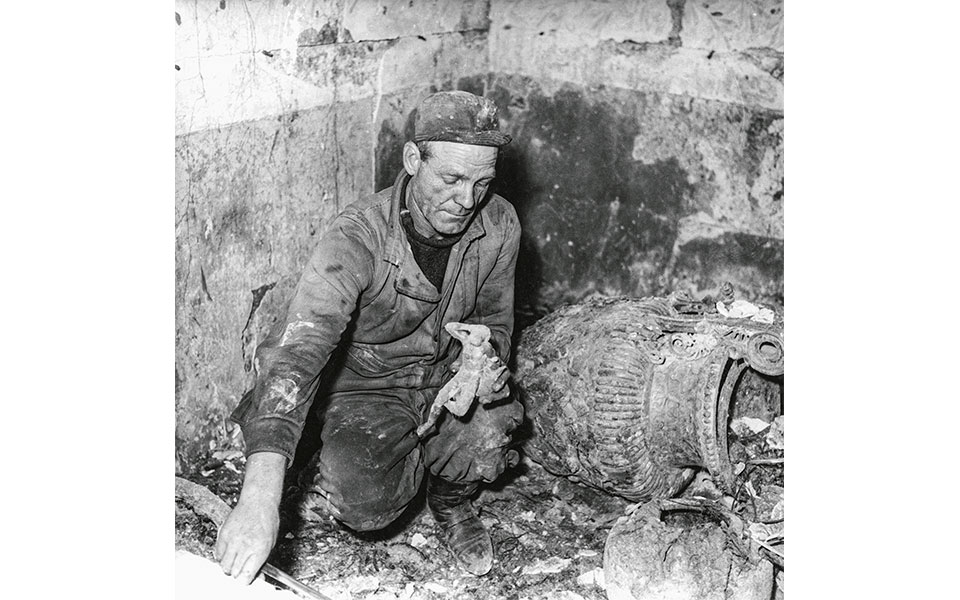
© Courtesy of the Archaeological Museum of Thessaloniki Archives
Into the digital age
Since 2006, the AMTh’s embrace of digital technology and interactive exhibits have added a further dimension to the visitor experience. Milestones include an initial collaboration with the Foundation for Research and Technology – Hellas in 2010 and the launch of the e-SKAPANI project in 2020, with 3D monitoring, digitized treatment of archaeological finds, and virtual reality “tours” of the Roman-era Galerian Complex, letting museumgoers see it as it was in the time of Emperor Galerius (early 4th c. AD). Other advances have included numerous EU-sponsored programs, such as the RFID digital tagging of all museum displays (2020) to allow visitors to interact with objects through virtual tours and games. Soon, as part of the “Museum on the Go” project, visitors will also be able to download an AMTh phone app, in twelve languages, to access exhibits, excavation sites, digital maps, and an audio guide for use both inside the building and outside on city tours.
A museum for all
As an important center of learning, the AMTh has hosted numerous scholarly lectures and gatherings, involving more than 1,000 specialists to date. It also pursues an active publishing program that has produced more than 50 in-house titles. All in all, the many displays of the current 60 Years exhibition affirm the Museum as a place for everyone to appreciate. From its recognition by the city as an historic architectural monument to its diverse collections and broadly appealing displays and from its adoption of everything from access ramps and of Braille to digital tech for the hearing-impaired and “tactile tours” for children and adults, the Archaeological Museum of Thessaloniki is clearly an invaluable cultural asset of the city and an integral part of the very heritage it has done so much to preserve.

